|
While a lot of school counselors are intimidated by the idea of running small groups, I LOVE them. Group services are the most effective use of my time, and kids are always relieved and happy to find that other students have many of the same struggles. I fill most of the direct service slots on my schedule with small groups. In my 25 years in a school setting, I’ve learned a lot about what works (and even more about what doesn’t). Here are my top ten tips for setting up and running your counseling groups. 1. Group students by issue. Twenty-five years ago, all my groups were simply called “social skills” (translation: we’d play games and practice good sportsmanship). For ease of scheduling, I grouped kids according to their homeroom or grade. Now that I’m actually trying to teach a range of social-emotional skills, I group kids by what they need to work on. My most common groups are: emotional regulation, anxiety management, Social Thinking©, and “social superheroes.” Once I determine who needs which type of group, I try to combine personalities that will work well together. 2. Consider co-ed or multi-grade groups. They provide opportunities for interaction between kids who wouldn’t normally spend time together. This is almost always a good thing. 3. Create your overall group plan before the first session. This isn’t hard if you’re using a purchased curriculum. If you’re more of the “spontaneous” type who likes to wing it from one week to the next, make sure you take notes so the next time you run this kind of group you already have a head start. The one thing you don’t want is to be running around 10 minutes before you pick up the kids, going, “Crap, what are we going to do today?” Disorganization is the enemy of a successful session! 4. Limit the group to 6, 8, or 10 weeks instead of having it last the whole school year. It forces you to be more deliberate with your limited time together, and a rotating schedule gives you a chance to service more children in a small-group setting. You can always roll high-needs kids over into the next round of groups. 5. Try to avoid lunch groups, unless they are purely social or a way for you to establish relationships with particular students. You cannot teach skills like emotional regulation, or do writing or craft activities with kids who are trying to eat their lunch. 6. Include role model students. Plural. If your group is four or more (and I never have more than 6 in a group; four is my preferred number), I include at least two role models. If it’s a group targeting students on the Autism spectrum, I include more. Listen to the voice of experience here: everyone, including you—especially you—will enjoy themselves much more if the entire group doesn’t sink to the lowest common denominator. 
make action GIFs like this at MakeaGif
These last four should be self-evident, but I’ll lay them out anyway:
7. Make sure you obtain signed permission for every student you plan on taking. If you’re recruiting a child as a role model, write it on the permission slip (as well as how long the group lasts, when it will meet, etc.). Parents are always flattered that their child is considered a role model for others; I’ve never had one deny permission. I also ask for permission to photograph and video students. 8. Set up some quick and easy way of communicating to teachers and parents what you did each week and how each student did. That way they can reinforce concepts outside of the group setting. Keep a copy for yourself too. Because data. 9. In your first session, let students know that sometimes you might have to miss a group because of a meeting or an emergency. I always assure them that I will never “forget” to pick them up, that I’ll try and let their teachers know beforehand if I’m going to miss or be late, and that I’ll add another week on the end so they will still get their allotted number of sessions. 10. HAVE FUN! I can’t stress enough how important this is. If you’re excited about the day’s activity and think it’s fun and interesting, the kids will too. Engaged children are happy and cooperative children who will devour everything you try to teach them and clamor for more. Did I miss anything? What is your top tip for successful small groups?
15 Comments
If you've read my About Me page, you'll know it has been my life-long desire to write children's books. For almost 50 years I secretly wished for it and thought about it often, but I never took action.
"I could never be a real author," I told myself. When I started teaching more growth mindset and goal-setting lessons, I realized how hypocritical that was. So two years ago, I dipped a pinky toe in the Lake of Dreams and joined a local writers' networking group. That led to me wading in up to my waist and joining a critique group. Then I ducked my head under and started writing instead of only saying I was going to write "some day." Now I have three polished picture book manuscripts (all of which will be excellent for counseling lessons for grades 2-6). I'm ready to jump from the high dive. Super George and the Invisible Shield is with the illustrator, and should be a real-live book by the end of the summer. I'm beside myself with excitement but more than that, I'm proud of myself. I'm proud that I stopped listening to my negative self-talk, set a goal for myself, and achieved it. I hope that Super George will help lots of kids in the future, but for me he'll always be the thing I can point to and tell kids, "See? Believe in yourself. You can do it!" Next up: a pet monkey. One would guess, looking at my blog, that I'm a real data nerd. I'm really not, but I do see the value in tracking certain information in order to be more efficient and effective in my job.
At the start of the school year I posted about my SMART goal to provide more parent outreach. I mentioned in that post that I was also going to start using a time tracker. I know there are several commercially available trackers, but since I'm never happy unless I'm reinventing the wheel, I made my own. I'd never used spreadsheets in either Excel or Numbers. The learning curve for Google Sheets was steep. I figured out a lot through trial and error, and when I couldn't figure it out I asked the people at our iSchool. I now have a totally customized spreadsheet that has only the general headings and sub-categories I want. The set-up makes sense to me and I made it pretty, which means I don't dread using it. We're now halfway through the year, and I've faithfully spent 5-10 minutes at the end of every day entering my numbers. All I have to do is type the number of minutes I spent in each category. (I round them to 5-minute increments because I'm not that anal-retentive). The spreadsheet is set up to automatically add up each row, column, and general heading. At the end of the year, I'll be able to easily compile it into a colorful pie chart to share. Here's a link to a copy of my spreadsheet so you can see how I set it up. I've had to disable the sharing option, but at least you can use my example as a jumping-off point for your own. So far I'm noticing some things that I wouldn't have noticed without tracking my time (like I actually do manage to get some planning time most days even though it feels like I never get my prep). You may also be surprised what you learn (and so might your administrator). Give it a try. It’s that time of year for SMART goals, so I’ve been reflecting on areas in which I need to improve. While there are so many to choose from, I’ve decided that this year I’ll be focusing on improving my communication with parents. It’s a big goal, so I’ve broken it down into some very actionable steps. In fact, I can already check most of them off my to-do list! 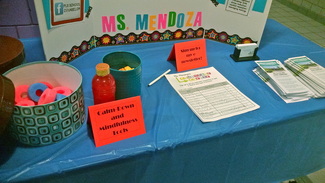 Step 1: Parents need to know who I am and why I’m here. So I spent a ridiculous amount of time updating my School Counseling brochure and making a tri-board. At Open House, instead of putting up a few signs pointing to my office and waiting there for people to show up (or not), I set up a table right in the foyer. I had the tri-board, copies of the brochure, a stack of my business cards, some of my “self-calming and mindfulness tools” for people to take (pool noodle stress fidgets and Starburst candies), and a sign-up sheet for my parent e-newsletter. Which brings us to... Step 2: Parents might like to hear about what I’m up to at our school: what concepts and strategies I’m teaching in different classes, what kind of groups I’m running, and what school-wide initiatives I’m helping to organize. I decided I’ll write a parent e-newsletter they can subscribe to. I’ll also include tips and resources for them to help their children develop social-emotional skills. I’m planning on publishing the newsletter once a trimester. That’s not as overwhelming as a monthly commitment, and I can always do more than that if I'm so inclined (I won't be). I haven’t sent the first one out yet because I’m still trying to figure out Mailchimp, but I have set up a link for people to subscribe on my Google Drive. Don't sign up there, but if you want to get a copies of the newsletter when they go out, e-mail me and I'll put you on a non-school list.  Step 3: For some parents, even signing up for my e-newsletter might feel risky. So I’ve set up a professional Facebook page and Pinterest account, which allows them to “lurk” without interaction or commitment if that's what they're comfortable with.  Finally, Step 4, which is related but not directly: I’m collecting data to assess how I’m coming on my SMART goal. I’ll track the number of followers I have on my FB and Pinterest accounts on the last day of every month, as well as note how many posts or pins I made that month. I also, of course, will track the number of people who subscribe to my e-newsletter. At the end of the year it will take about 10 seconds to compile that data into a sweet little line graph to upload to Teachpoint. Having a goal this public is either going to be really motivating or really embarrassing. We’ll have to wait until June to see which! I’m having a bad dream. “Loser! Liar!” References to parts of the male anatomy follow. Voices overlap, interrupt, mock and insult each other. As in many dreams, I can’t quite place where I am. At the elementary school where I work? The language fits, but the voices are not children’s voices. Soon the loudest, crudest, and most insistent voice overpowers the rest. That kid needs recess support, I think. The cat jumps on me and I’m awake. Ah. I’ve fallen asleep watching the Republican presidential debate. ***** The top three Republican candidates make middle school bullies look like elder statesmen. They make Jersey Shore look intelligent. They make the Three Stooges look suave. We’re in Opposite World, where being socially unacceptable is socially acceptable; saying every nasty, hateful thing that pops into one’s head is “telling it like it is,” not “being a jerk.” While I don’t think Donald Trump is nearly as awesome as he thinks he is, he is clearly the winner in this department. He gets tons of airplay because of his entertainment value. You have to watch because he’s so monstrously unpredictable. Is there nothing this guy won’t say? It's like word-vomit. But what he, his opponents, his supporters, and the media all either don’t understand (doubtful) or just don't care about (probable) is the fact that Donald Trump is the most terrible role model imaginable. He is making my job as a school counselor much, much harder. Mature adults (and I admit I don’t always qualify) believe it’s our mission to teach the children in our care to be kind and responsible citizens. There are many social skills involved and a certain amount of brain development required, so we spend a lot of time in public school teaching and modeling what a respectful community looks like. When we don't treat each other with common decency, the community falls apart. It becomes the opposite of "great." Therefore I offer to Mr. Trump and his opponents our basic elementary school rules for being part of a respectful community. Gentlemen, my students as young as Kindergarten can understand and follow these rules most of the time so I promise you: you can do it. 1. Use a one-inch voice. When you yell, it makes other people have uncomfortable thoughts and feelings about you. They feel stressed and stop hearing your words. I know it sounds weird, but the more calmly and quietly you speak, the more others will listen. 2. Don’t step on other people’s words. Interrupting is rude. It annoys others. Wait until it is your turn to speak. No one can hear you anyway when more than one person is talking at once. 3. Keep it in your thought bubble. No one can read your mind. That means you can’t get in trouble for what you think. You can, however, get into a world of trouble for what you say out loud. Think whatever you want, no matter how mean or rude or socially unacceptable it is, but don’t say it. We call this having a filter. 4. You don’t have to like everyone, but you do have to be respectful towards them. Let’s be honest: no one is friends with everybody. That’s okay. But it’s not okay to be mean to people you’re not friendly with. We want every person in our school/country to feel safe, welcome, and comfortable. 5. Be a bucket-filler. Bucket-fillers are people who make others feel good by being kind and thoughtful. Bucket-dippers say mean things and act selfishly. No one likes to be around a bucket-dipper. 6. You can’t threaten anyone. Ever. That means ever. 7. Be responsible. Being responsible means telling the truth even when it’s hard, admitting when you make a mistake, and apologizing if you’ve wronged someone. Good citizens are responsible. I tell students that it’s “grown-up” to behave this way, even though that’s apparently now a lie. Ironic. 8. Follow the Golden Rule. You probably learned about the Golden Rule when you were younger. It says, “Treat others the way you’d like them to treat you.” If you don’t like it when people call you names or say your ideas are stupid or say you don’t belong here and should crawl back under the rock you came from, then you shouldn’t say it to them. This is doubly true for people you don’t like, who are weaker than you, or who you disagree with. Why would we need a rule that tells us to treat only our friends nicely? Answer: we wouldn’t. Captain Obvious is not the author of the Golden Rule. In our school we have what’s called a “growth mindset.” That means we believe that anyone can get better at anything---even things that seem impossible---with practice and determination. Like any little-used muscle, your respect muscle will grow stronger with use. Please do us all a favor and start exercising it. Little pitchers have big ears. Last year, as you may recall, I had THE BEST time teaching in the Extended Year Program. I was given a class of ten boys entering grades 3 and 4. I was asked to run a "social skills" program, but beyond that was given almost total autonomy. Since most of the boys were either highly anxious and/or on the spectrum, I wanted to incorporate a lot of Social Thinking and Zones of Regulation concepts. I figured a superhero theme would be perfect.
And it was. The kids had a blast, I had a blast, and the parents loved it. If you missed it, you can read about it here. This summer I decided to use the same theme, though I've been given a much different population (K-2 kiddos, most significantly behavioral). I was going to tell you more about this but it turned into a teensy rant. Let's just say that---as is almost always the case---the sequel will probably not be the blockbuster mega-hit the original was. Anyway, this brings me to the main reason for this post... I made some "caught being super" coupons to encourage kindness, flexibility, effort, etc. Click on the picture above, or here, and help yourself. The file also has black and white versions in case you don't have a color printer. Enjoy your summer! I'll check in later and let you know how mine turned out. My daughter and I saw Inside Out yesterday (at the theater! less than a week after it was released!). Did I love it? Yes! Was it as cool as I thought it was going to be? Absolutely! Will it become the new cornerstone of my counseling activities in the fall? Well... no.
First the good news. I thought the movie was brilliant (and judging by the woman down front loudly laughing her head off at some of the more adult humor, I wasn’t the only one). The visuals were amazing of course, and the story was engaging on multiple levels for adults and children. I laughed, I cried. There were some fantastic themes that I will absolutely be using in individual, small group, and classroom lessons (for a terrific list of some of them, see this blog post by Heather at The Helpful Counselor). In fact, I’ll probably try and create a few lesson plans and share them before the end of the summer, so check back in August. The very best thing---among so many---about Inside Out is its primary message: that all feelings have a purpose. Even the unpleasant ones. Of course as a counselor I already knew that, but this movie drove it home in a way that made me feel somewhat guilty. While I have a high comfort level sitting with kids’ unpleasant feelings, I’m also often a kind of cheerleader. “You’re right, that really stinks,” I’ll say, about some problem or another a kid is having. “BUT (insert Suzy Sunshine spin here)...” I need to tone that down, I think, in order to help my students feel more heard and understood. “Drive-by empathy” is probably not the best tool in my toolbox. So I loved the movie and learned an important lesson---all totally worth the $20 and 50,000 buttered popcorn calories. Now here’s where I become just a teensy bit critical about two things (my big BUTs...). First, Joy is responsible most of Riley’s memories, especially the core memories that form aspects (“islands”) of her personality. My immediate thought was that I work with a lot of kids whose core memories were not created by Joy, but by Anger or Fear. Do I then allow them to believe that the bad things that have happened to them define who they are? Ouch. I have to think more about how I’ll deal with this. Second, in my work I teach a lot of CBT (Cognitive Behavioral Therapy) concepts. The basic philosophy is that your thoughts about an event shape the way you feel about it and, therefore, how you respond to it. If you change your thoughts, you can often change your feelings and actions. To use a common example, if someone cuts me off in traffic I might think (because I drive in Massachusetts), “Hey, that asshat just purposely cut me off!” Then I get extremely angry and lay on my horn or give the one-fingered salute (because I drive in Massachusetts). However, if I stop and think that maybe that person simply didn’t see me, or is rushing to the hospital to see an injured family member, I’m not going to get angry. Or not as angry, because, Massachusetts. Here’s my biggest issue: throughout the movie, Riley is at the complete mercy of whichever of her feelings is at the control board in Headquarters. Her feelings control her behavior, and the vice is never versa (to coin a phrase). She’s not the captain of her own ship. Since one of my core beliefs is that we can change our feelings by changing our thoughts, I only give Inside Out 1.85 thumbs up (but zero one-fingered salutes, so that's good). I'll definitely use it in counseling, but will put my own spin on it. So what else is new? I would love to hear what you think! Do you agree, or do you think I’m being a picky asshat? Discuss. 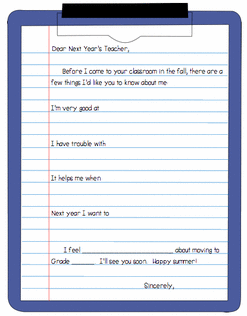 So we're down to the final two weeks of this seemingly endless year (thanks for nothing, Old Man Winter) and to be perfectly honest, I'm running out of steam. Regardless, kids still must be seen and activities still must be related to IEP goals. This week I came up with the admittedly unoriginal idea of having students write to their next year's teacher (even they don't know yet who that will be). I have so many anxious and/or quirky kids who've worked hard to develop their own set of strategies, that I figure it will do everyone good. I know the new teachers will definitely appreciate the info. And it is always interesting for me to see how the kids choose to describe themselves. Here's the link to the worksheet. May it help you pass your last week or two productively! Next up on my to-do list: planning for summer school... Back in the day at my previous school, I used to facilitate a Random Acts of Kindness Week celebration. I was feeling a bit nostalgic about it, so I asked the leadership team at my new school if we could try it out this year. With my past experience I assured them I could handle it. No sweat. Spoiler alert: this doesn’t turn out as badly as you’re probably expecting. Thanks to my ten-year-old notes, randomactsofkindness.org and Pinterest, I had a wealth of kindness activities to choose from. I settled on one major on-going project for the week and two major one-day activities. I’m really glad I didn’t plan five major projects. Since I refused all offers of help (because anal-retentive, over-controlling, I can bring home the bacon AND cook it up in the pan), a big project a day may very well have killed me. THE PREPARATION On the Thursday before RAK Week, I sent an e-mail to teachers explaining what I was planning. I included links to kindness activities, attached the schedule of events as well as a kindness bingo board they were welcome to use if they chose (based on one I’d seen on The Inspired Counselor), and offered to loan out my kindness-themed books. The top three I own are Kindness is Cooler, Mrs. Ruler, Ordinary Mary’s Extraordinary Day, and The Goodness Gorillas. Excellent communication was crucial for RAK Week. I had to be sure that everyone in the building was clear on what was happening. This was true not only for the teachers and administrators, but also for the custodians, the lunch monitors and cafeteria workers, and the front office staff. Some of my planned activities directly impacted the usual morning routines and lunch procedures. The Friday before RAK Week, I sent home a parent letter and schedule of events. I encouraged them to support and model kindness at home. After school on that Friday, I went around the building and put up the signs my Kindness Club girls and I had made. There was a Kindness Zone poster for the foyer, kindness quotes for the hallways, and index cards with kind words written on them that I taped on the bathroom mirrors (an idea from Carol Miller at The Middle School Counselor). I also set up the Kindness Tree bulletin board in the foyer, and put stacks of paper hearts in each teacher’s mailbox. RAK WEEK Each day began with a morning announcement. I wrote most of these and borrowed some from The Inspired Counselor. My Kindness Club girls read them, which was a great lesson for them in bravery and public speaking. Since I hate public speaking myself, it worked out nicely. They announced the theme of the day, gave examples of actions kids could take that fit in with the theme, let them know if there was an activity planned, and read a quote about kindness. The themes of the day were Manners Monday, Thankful Tuesday, What Can I Do to Help? Wednesday, Thoughtful Thursday, and Friendship Friday. I got a little stuck on naming Wednesday, as you probably guessed. Two of the three major activities that I had to coordinate were related to theme days. First was on Thankful Tuesday, when I set up an “Appreciation Station” in the cafeteria. After students were done eating, they could come to the Appreciation Station to write a thank you note to any adult helper in the building---not just teachers and aides, but also bus drivers, office staff, lunch monitors, the custodians, etc. I made a thank you note template, and helped the younger kids with the writing. After school I put the notes in people’s mailboxes. Lesson learned: This was the number one time I could have used a lot of adult assistance, but I hadn’t asked for any. Why? Because I always think I can do it by myself. Well, this time I couldn’t. Many of the kids needed prompting to come up with ideas about what to write, and the littler guys needed a scribe. The only thing that saved my bacon was the presence of my 14-year-old, who (thank God) had a snow day. The second big project was the Friendship Friday lunch. Instead of having the kids sit at lunch tables by class, I asked them to sit according to their birth month. I encouraged them to talk to kids they didn’t already know well. This was a huge hit with the 2nd, 3rd, and 4th graders. It was harder for Kindergarten and grade 1, many of whom were unsure of when their birthday is. I had a list, but it took a lot of time to get everyone seated. Lesson learned: Next year I will probably choose to do this with just grades 2-4. The third major project was the one that lasted all week. I made a Kindness Tree bulletin board in the front lobby (similar to a photo I’d seen on Pinterest). During RAK Week, whenever students performed an act of kindness, they were welcome to write it on a paper heart. I gave teachers each a stack of hearts at the beginning of the week, and they would leave completed hearts in my mailbox at the end of the day. I put them on the bulletin board after school. I got tons of positive feedback from students, teachers, administrators, and support staff. Sure, the lunch monitors were a little stressed during the Friendship Friday lunch, but they also loved getting thank-you notes from the Appreciation Station. The Kindness Tree was probably the biggest hit overall.
The whole thing reminded me a lot of childbirth: a huge amount of work, but absolutely worth it in the end. If you’re on the fence about whether you’d like to do this at your school in the future, I say yes---just be sure you’ve got lots of assistants. Visit this page in my Teachers Pay Teachers store to download them free. We've been having a problem at my school that's probably fairly common: students who are generally respectful in most areas of the building seem to believe they're entering a no-rules zone once they walk into the cafeteria.
When students enter the lunchroom, suddenly they're yelling at peers, pushing others out of "their" seats, and/or dropping trash on the floor. The poor lunch monitors can't maintain order because many students have the attitude "You're not my teacher, so I don't have to listen to you." So when we were brainstorming solutions at our NOS ("Nice Orderly School," not "Not Otherwise Specified") meeting last month, I remembered reading a few years ago about a school north of Boston that was trying to increase students' awareness of their behavior in the cafeteria. Their approach was called The Courtesy Cafe (which was mostly the only real detail I remembered). We decided to start our own Courtesy Cafe. We chose a Friday date for the first cafe. Students were not told anything about the initiative. We gave the lunch monitors and cafeteria workers blue slips on which they could write the names of students who cleaned up after themselves, listened to the adults, had good table manners, and used polite language. They collected names from Monday through Thursday. On the designated Friday, the principal and assistant principal addressed each lunch period. They explained the criteria for being invited to eat in the Courtesy Cafe, then called up those students whose names had been collected throughout the week. The Chosen Ones got to eat their lunches on the stage, in front of everyone, at a special table with the principal (Note: she's extremely popular, so this was definitely a desirable reward). One of the cafeteria workers was so psyched about this project, she went all out and bought tablecloths and a centerpiece for the table. Seeing their peers eating with the principal and basking in the glow of her attention had a major impact on other kids. The lunch monitors have reported a definite improvement in cafeteria behavior for most of the student population. The Courtesy Cafe will only be open sporadically, so no one can predict when the next one will occur. It might be tomorrow, or it might be next month. This ensures that kids won't only be respectful on, say, Thursdays. We're going to vary the "special guest" and may end up doing other occasional tweaks to change things up and avoid a loss of motivation. I'm hoping to be invited as a special guest sometime soon! I'd better brush up on my table manners... |
Author
|
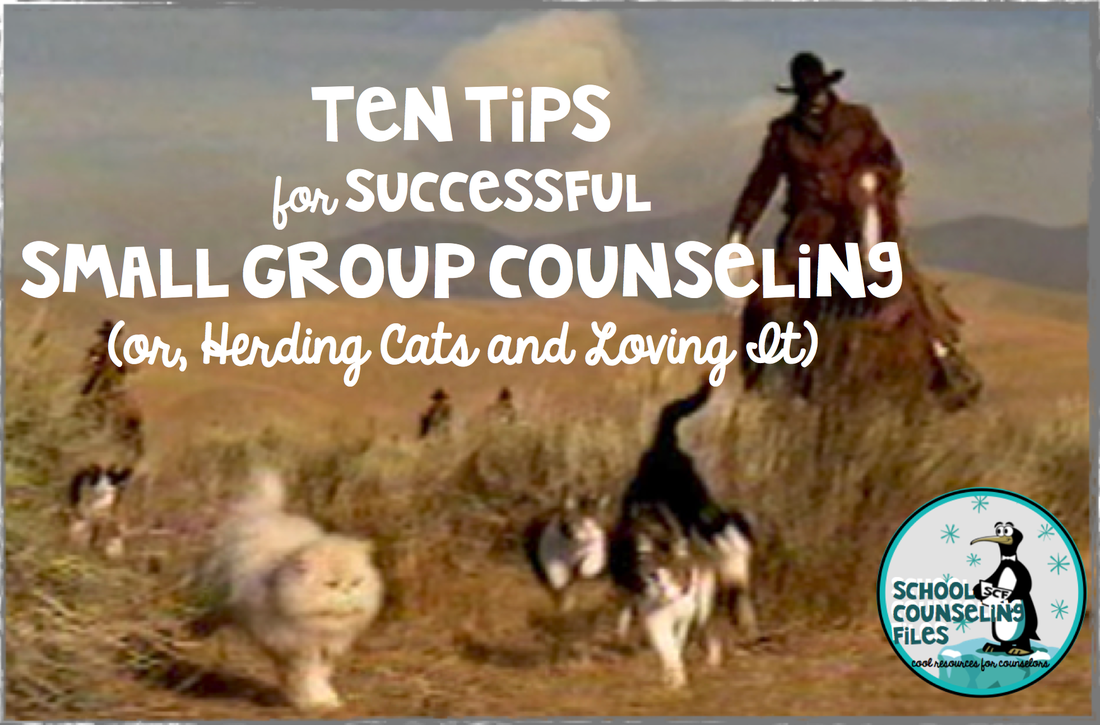

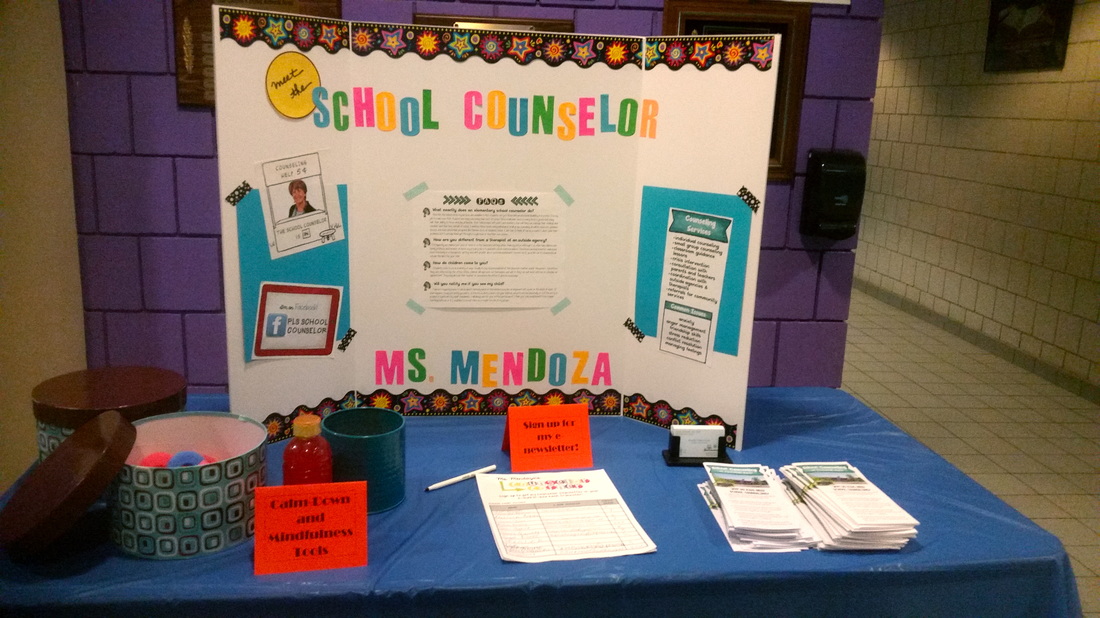


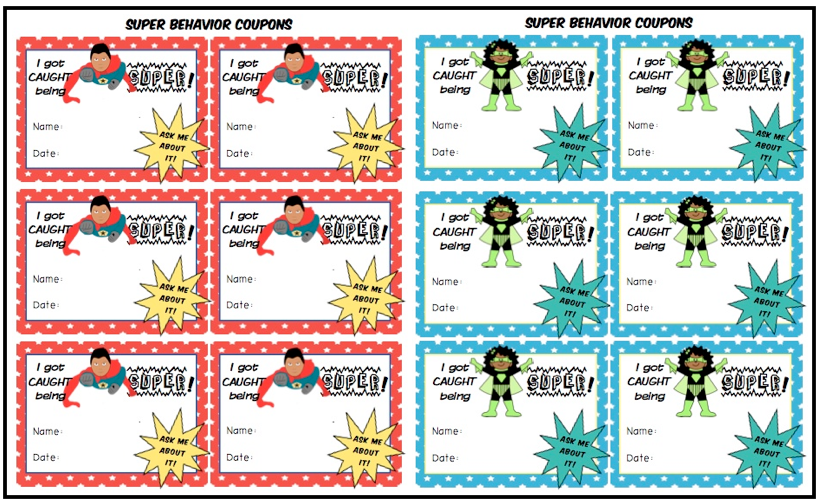
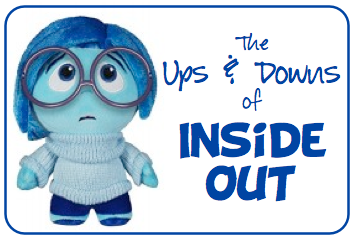
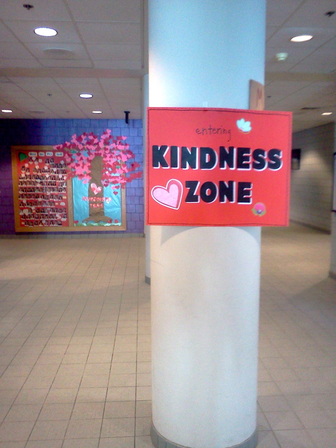





 RSS Feed
RSS Feed